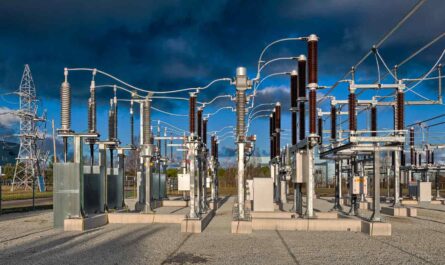 Introduction
Introduction
Compressed Natural Gas (CNG) has emerged as a viable alternative to gasoline and diesel fuels in the automotive industry. CNG offers several benefits like lower emissions, lower operating costs, and abundant domestic supply. However, for CNG to be used as a transportation fuel, it needs to be compressed to a high pressure. This is where CNG compressors play a crucial role in the adoption of natural gas vehicles (NGVs).
CNG Compressors: Enabling the use of Natural Gas as a Transportation Fuel
Compressed Natural Gas (CNG) exists in its gaseous state at standard atmospheric conditions and needs to be compressed to a very high pressure in order to be used as a vehicular fuel. CNG compressors are specially designed equipment that efficiently compress natural gas to pressures ranging from 3000-3600 psi, which is required for fueling CNG vehicles. The working and importance of CNG compressors is discussed in detail below.
Types of CNG Compressors
There are mainly two types of compressors used for compressing natural gas: reciprocating compressors and rotary screw compressors.
Reciprocating compressors use pistons in cylinders to compress the gas. They can achieve very high pressures of up to 5000 psi but are relatively bulky and noisy. Reciprocating compressors are commonly used at CNG refueling stations for compressing large volumes of gas.
Rotary screw compressors, on the other hand, use two meshed rotating screws to compress the gas between their lobes. They offer a more compact design, can achieve moderate pressures of around 3600 psi, and are relatively quieter. Many commercial natural gas vehicles are now filled using rotary screw compressors.
Working of CNG Compressors
The working of a CNG compressor mainly involves three stages – suction, compression, and discharge.
In the suction stage, low-pressure natural gas at atmospheric pressure is drawn into the compressor through the suction valves. The gas then enters the compression chamber/cylinders of the compressor.
During the compression stage, the pistons or screws mechanically compress the gas to very high pressures. Multiple compression stages may be used depending on the target operating pressure.
Finally, in the discharge stage, the highly compressed gas exits the compressor through discharge valves at elevated pressures of 3000-3600 psi, ready to be filled into vehicle fuel tanks or gas cylinders. Sophisticated controls are used to automatically regulate the compression process.
Importance of CNG Compressors
CNG compressors play a critical role in enabling the use of natural gas as an automotive fuel. Some of their main importance is discussed below:
– They compress natural gas from atmospheric pressure to the high pressures required for fueling CNG vehicles efficiently. This compaction allows more gas to be stored in the limited space in vehicle fuel tanks.
– CNG compressors located at fueling stations enable the fast refueling of vehicles. Commercial vehicles can fully refuel in just 15-20 minutes with the help of high-capacity compressor systems.
– Onboard CNG vehicle compressors allow homeowners to refuel their personal NGVs from residential natural gas pipelines overnight. This makes CNG a practical alternative for private passenger vehicles.
– Using compressed natural gas instead of LNG minimizes on-vehicle storage tank size, weight, and cost. It makes retrofitting gasoline/diesel vehicles to CNG technology more viable.
– Properly designed reciprocating and rotary screw compressors can achieve refueling pressures reliably for many years with minimal maintenance requirements. This improves the economics of operating CNG refueling stations.
Challenges in CNG Compression
While CNG compressors present benefits, compressing natural gas also poses some technical challenges:
– High energies and temperatures are generated during rapid gas compression. Effective cooling systems are required to remove this heat.
– Lubricating the moving parts under high pressures without contaminating the fuel stream is difficult. Novel oil-free compressor designs are being researched.
– The lower energy density of CNG compared to gasoline results in a volumetric efficiency penalty for vehicle range. Compressors strive to maximize gas density.
– Strict safety regulations apply due to high working pressures. Features like automatic shutdown and relief valves are mandated in compressors.
– Reciprocating compressors require more maintenance than rotary types. Their reliability over long duty cycles needs further improving.
Emerging Compressor Technologies
Research is ongoing to develop more energy-efficient and cost-effective CNG compressors. Some emerging trends include:
– Multiple-stage intercooled compression systems that achieve impressive volumetric efficiencies compared to single-stage designs.
– Oil-free magnetically levitated turbo-machinery compressors ideal for high-volume stations and onboard vehicle applications.
– Rotary vane compressors gaining favor for small-scale uses like fueling low-capacity fleets from home refueling appliances.
– Cryogenic and supercritical compression techniques to boost gas density even further for maximizing vehicle range.
Conclusion
In summary, CNG compressors present a critical enabling technology behind the growing adoption of natural gas as a transportation fuel worldwide. Further innovations will continue to make CNG compression more energy-efficient, cost-effective, and able to support the large-scale use of NGVs in commercial fleets and personal vehicles alike. Overall, compressors play a major role in the increased utilization of clean and affordable natural gas.
*Note:
- Source: Coherent Market Insights, Public sources, Desk research
- We have leveraged AI tools to mine information and compile it



